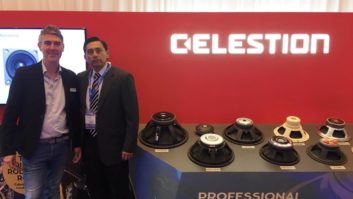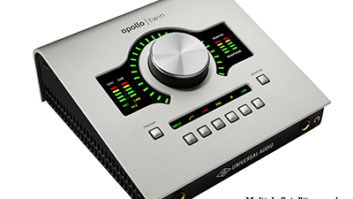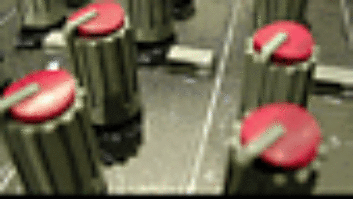If you still think of a DJ as “the guy who played Streisand’s ‘Evergreen’ at my cousin’s wedding,” you’re in for a shock. Instead of just lining up one song after another and cruising on autopilot, today’s DJs keep raising the bar for creative use of arrangements, effects, samples and artistic input. This has even spawned a new term, “producer DJ,” because what they’re really doing is more like real-time production and engineering than just spinning tracks.

Not surprisingly, the personal computer is a major factor in this shift. Once again, computer technology has virtualized the physical, and in the process, opened up the world of DJ’ing beyond those with huge vinyl collections and streamlined the traditional twoturntables- and-a-microphone (and a mixer) paradigm. Today’s DJ is more likely to be carrying around a laptop with a collection of tracks (whether uncompressed, MP3 format, or a mix of the two) stored on the laptop’s internal hard drive, which typically now has the needed capacity to carry a music library that would have taken case after case of vinyl.
As to interfacing, DJs have somewhat different requirements than traditional laptop musicians, as they need to be able to cue upcoming audio through headphones while the main outputs keep pumping out music to the crowd. Manufacturers are more than willing to oblige, producing cost-effective interfaces with multiple outputs, mixing applets for routing and bussing, mic-ins, and of course, headphone-outs. Some even give a nod to the past with turntable inputs, but you may also find additional line inputs to augment the internal music collection with a portable player.
The key to popularizing the laptop DJ setup isn’t just the computer, but also dedicated control surfaces. The DJ experience is all about tactile feel and, initially, turntablists looked down on virtual DJ setups because they couldn’t duplicate the nuances of drag and acceleration inherent in turntables like the venerable Technics SL1200. Some would still argue that we aren’t there yet (just like some say amp sims aren’t really on a par with real amplifiers), but there’s no denying that hardware controllers have made tremendous advances in the past few years. Not only have they managed to emulate the typical turntable platter, even allowing complex scratching moves that sound (and feel) like “the real thing,” but they’ve added other real- time controls for functions like effects selection, tempo sync, pitch control and the like. Controllers vary from compact devices that are ideal for super-portable setups to larger controllers that aren’t that different from a traditional pro deck setup.
As to the software, that’s perhaps where the biggest change has occurred. Much of the “grunt work” of DJ’ing, like beat-matching the transition between two tracks, is now semi-automated (the software does signal analysis to determine the tempo and can use DSP to perform on-the-fly timestretching). Although purists contend that this removes a lot of the art and technique that separates one DJ from another, others argue that by streamlining the beatmatching process, DJs are freer to concentrate on the true task at hand, which is creating a seamless, evocative succession of music, not impressing people with their beatmatching skills.
DSP also makes it possible to adjust the key so there can be seamless melodic as well as rhythmic transitions. Fur thermore, because the software is always keeping tabs on the tempo, temposynched effects are now standard. Couple this with a control surface capable of manipulating those effects, and you’ll find DJs adding not only traditional processors like delay and flanging, but also new effects designed specifically for DJs (like “gapping” that produces rhythmically stuttering effects).
However, not all software emulates traditional DJ’ing. The program that first applied “DJ thinking” to traditional DAWs—Sony’s groundbreaking Acid software, released originally by Sonic Foundry— has been joined by programs like Ableton Live, Propellerheads Reason, and FL Studio. You’re also seeing DJ-style features added to traditional DAWs, like Cubase’s LoopMash function, Avid’s Transfuser virtual instrument, the Matrix View in Cakewalk Sonar, and more. While these aren’t DJ programs per se, more and more DJs are discovering that they can do traditional DJ’ing—and considerably more—with the latest generation of DAWs.
Several manufacturers have told me that the DJ business is their fastest-growing market segment, and most attribute it to the emergence of laptop-friendly DJ software and pro-level, hands-on controllers. Once again, computers with appropriate software have virtualized—and in the process, democratized—another part of the music-making world.
Craig Anderton is executive editor of Electronic Musician magazine and editor in chief of harmonycentral.com.







